
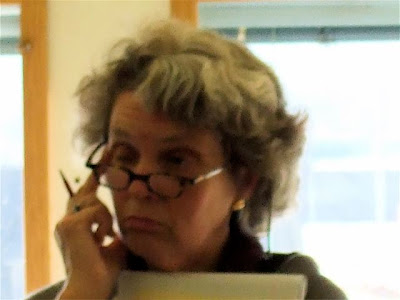
December 2007:
the University and its collaborators respond to critics.
Although both the West Cemetery and the University campus earned spots on the list of “Ten Most Endangered Historic Resources” in the Commonwealth, the contrast could not be more striking. In the former case, Amherst residents and government alike readily rallied to save a treasured resource. In the latter, the responsible authorities (and one can use that term only in deliberate and full awareness of its ambiguity) have done all that they could, first, to deny that a problem existed; and second—once forced to acknowledge the problem—to obstruct an amicable and thoroughgoing solution.
The University of Massachusetts (UMass) and the University of Massachusetts Building Authority (UMBA)—they insist on this administrative distinction, so let each earn its individual place in the Hall of Shame)—in their rush to erect new facilities (however badly needed; this not the issue), have displayed callous disregard for the spirit and letter of the law alike.
Buildings have been lost. Others are threatened by sins of omission or commission. Only thanks to the persistence of a new citizens’ advocacy group—“Preserve UMass”—were the light of public opinion and the legal power of the Commonwealth brought to bear on the wanton destruction. Because we are still engaged in protracted negotiations, I will reserve detailed comment on them until the results become public. In the meantime, the sad story to date can easily be summarized:
Recent Timeline:
Spring 2007
• Emphasizing the high cost of maintaining "legacy buildings," UMass produces a list of structures variously slated for maintenance, renovation, or destruction, employing subjective standards and categories devised without advice of appropriate experts. Among the threatened structures are many of demonstrable historical and architectural significance including some listed on local and state inventories.
• In response, concerned faculty, staff, alumni, and community members form “Preserve UMass,” led by Joseph Larson, Professor Emeritus of the Natural Resources Conservation Department and Chair of the Pelham Historical Commission.
Summer-Fall 2007
• The then-Chancellor refuses to meet with PUMA (it will not have a “seat at the table”). In hopes of obtaining the professional evaluation that the University had declined to procure, PUMA (with the support of the Amherst Historical Commission) nominates and secures designation of the UMass campus as one of the state’s “Ten Most Endangered Historic Resources.”
Fall 2007
In preparation for construction of a new recreation center, UMBA begins to demolish the 1910 Brooks Dairy Barn, a pioneering, state-of-the-art facility in its day, listed on the Massachusetts Historic Assets Inventory. PUMA, discovering that the authorities cavalierly failed to file for the mandatory review by the Massachusetts Historical Commission (MHC) and Environmental Protection Agency (MEPA), secures a stop-work order. It is subsequently revealed that both UMass and UMBA have a substantial record of non-compliance.
December 2007
• The Commonwealth convenes a MEPA public hearing on the Brooks Barn.
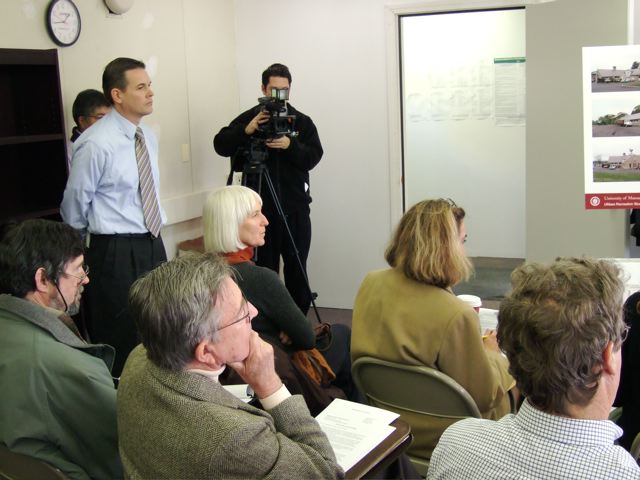
WSHM TV3: the public's right to know
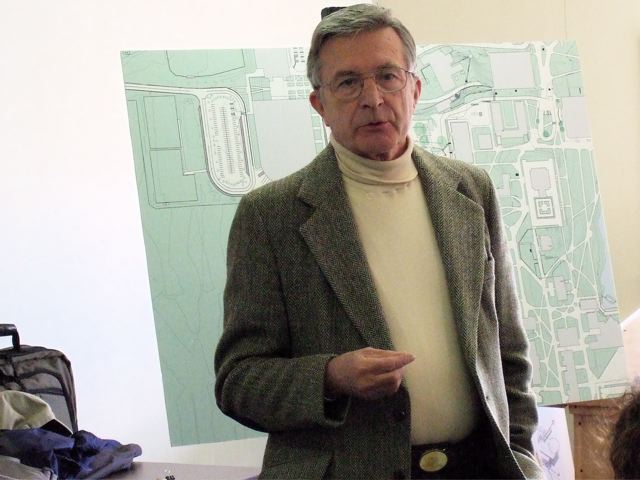
Professor Joe Larson of PUMA demands real answers to tough questions
How dare you question us?!
You didn't tell us there would be a quiz: desperately searching for answers (we know they're here somewhere)
• The Commonwealth finds no significant environmental issues but sharply orders UMass and UMBA to comply with state historical regulations. The Secretary of Energy and Environmental Affairs declares:
January 2008
• MHC convenes a meeting to prescribe a course of action. On the one side: UMass, UMBA, and their contractors and lawyers. On the other: PUMA, Amherst Historical Commission, Preservation Massachusetts, and the National Trust for Historic Preservation, all of which receive official standing from the Commonwealth to review any agreement. The preservation advocates acknowledge that it is not practical to save or adaptively-reuse the Brooks Barn as a recreation center, but propose stringent guidelines for documentation of what is to be demolished, creation of a corresponding on-site exhibit on the University’s agricultural-architectural heritage, and clear methods of inventorying and analysis to precede any further changes to historic structures and landscapes, in accordance with the law and accepted professional practice. They further insist that the Barn be treated not as a discrete structure, and instead as part of an integral but now compromised complex of historic facilities.
• Based on the aforementioned discussion, MHC drafts a Memorandum of Agreement (MOA).
March 2008
• UMBA destroys the historic Brooks Barn.
I have received numerous thoughtful and detailed comment letters on this project that also speak to the importance of other historical resources on the UMASS Amherst campus. I strongly encourage the University of Massachusetts Building Authority and UMASS Amherst to work cooperatively with MHC and interested parties to take a comprehensive survey of structures of historic and/or architectural importance on the campus. Consultation with MHC should be a first step during the planning process for future projects and I expect that the Proponent and the University will ensure that all future projects comply with regulations pertaining to historic and archaeological resources.
January 2008
• MHC convenes a meeting to prescribe a course of action. On the one side: UMass, UMBA, and their contractors and lawyers. On the other: PUMA, Amherst Historical Commission, Preservation Massachusetts, and the National Trust for Historic Preservation, all of which receive official standing from the Commonwealth to review any agreement. The preservation advocates acknowledge that it is not practical to save or adaptively-reuse the Brooks Barn as a recreation center, but propose stringent guidelines for documentation of what is to be demolished, creation of a corresponding on-site exhibit on the University’s agricultural-architectural heritage, and clear methods of inventorying and analysis to precede any further changes to historic structures and landscapes, in accordance with the law and accepted professional practice. They further insist that the Barn be treated not as a discrete structure, and instead as part of an integral but now compromised complex of historic facilities.
• Based on the aforementioned discussion, MHC drafts a Memorandum of Agreement (MOA).
March 2008
• UMBA destroys the historic Brooks Barn.
Before and after the use of weapons of UMass destruction:
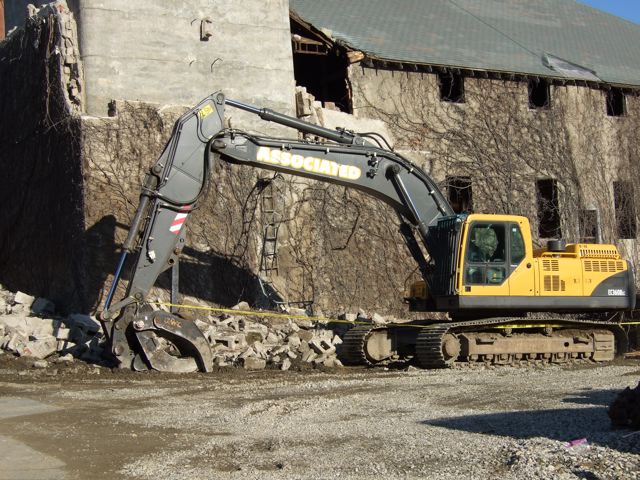
Winter-Summer 2008
• Negotiations over proposed MOA drag on through multiple revisions and several months as UMass and UMBA raise repeated objections.
It is truly difficult to say which is more deplorable: the utter philistinism of the University authorities or the sense of entitlement that leads them to act in such a highhanded manner. On the one hand, one can only applaud UMass for increasing construction of facilities and hiring of faculty in an aggressive attempt to secure its status as a truly national university of the first rank. On the other hand, one cannot fathom how the oft-stated desire to raise the intellectual caliber of the institution is compatible with disregard for, first, the law; and second, its own heritage, which moreover belongs not to it alone and is, rather, the patrimony of the Town and Commonwealth.
The underlying issue, of course, was the failure to understand that there is a heritage to protect. It may well be that not only philistinism, as such, but also a corresponding status anxiety contributed to the current tragedy. Indeed, the signs that prominently mark each UMass construction site with the proclamation, “New Dirt,” can be read in an interesting way and may reveal more than they were intended to. In the first place, the phrase itself is of a liminal register, trying to be at once professional and hip: “Yeah, man, we’re a high-powered research institution and want to compete with Berkeley and Ann Arbor, but hey, we’re cool and don’t take ourselves too seriously and use small words that 'the people' understand—just look at this sign! (wanna see my piercings? I mean: SAT scores?).” In the second place, it is as if all the activity is in part an attempt (subconscious or other) to bury or erase the shameful past: The "new dirt” of construction for offices, classrooms, or labs of the “Research-1” university intended to supplant the “old dirt” of agriculture. It really isn’t necessary—the pretence and posturing and prevaricating, I mean.
Ironically, if the University had an ounce of self-confidence and strategic instinct, it could have embraced its agricultural heritage, turning it from a mark of shame into a point of pride: As one of the first Morrill Land Grant (1862) universities, the Massachusetts Agricultural College was a pioneer in democratic education and new scientific research alike. In 1869 or 1910, the field trials of plows and the construction of the Cow Barn were the forerunners of today’s vaunted Polymer Science center and Nanotechnology Institute. A leader then, a leader now; for nearly 150 years, a pioneer in a changing world: Is that so hard to grasp? Are there no marketing and advancement advisors to speak common sense (and cents) to power?
As our concern for late nineteenth-century vernacular and agricultural structures makes clear, historic preservation does not involve only ancient and elegant buildings (indeed, the boundary is set at 50 years; the Eisenhower-era ranch house, no less than Washington’s Mount Vernon thus potentially qualifies). The historical evolution of the campus from pioneering agricultural college to leading academic research university should be a story that we highlight and tell with pride. That story is recorded in the built and landscape environment of the University, valuable in itself and also as a means of promoting support of that institution and cultural tourism for the town as a whole. Its value as an ensemble is greater than the sum of its parts, and the destruction of each individual historic building or landscape feature—though the loss may seem small and acceptable to some at the time—whittles away at the integrity of the whole.
Indeed, a news report on the Amherst Preservation Plan led with the Historical Commission’s appraisal of the campus as “a showplace of historic architecture,” and the co-author of the Plan stated in a public hearing that “many of the earliest buildings from its days as a land-grant college—as well as some contemporary structures—are historically significant and endangered” (Tom Marshall, “UMass considered as historic district,” Daily Hampshire Gazette, 29 June 2004; reproduced in Appendix E-2 of the Preservation Plan). One of the top priorities of Preservation Plan is therefore the creation of a contiguous University of Massachusetts Historic District (pp. 29, 36).
What the Historical Commission, PUMA, and like-minded preservation groups and citizens are asking is not impossible. Indeed, it is strikingly similar to a statement of purpose recently promulgated in the Master Plan of the University of Wisconsin, another leading public institution of higher learning that has a distinguished heritage in agriculture and academic research alike—and moreover shares many concrete historical ties with UMass:
These Guidelines are not intended to prescribe solutions nor limit creativity, but rather to establish a flexible framework that respects UW’s past and addresses its current challenges, while being inventive in establishing its future.It is notable that this document opens with a photo essay on "buildings we like," which in turn begins with "historic fabric buildings"--including agricultural as well as academic, administrative, and residential--very similar to those on the "hit list" in Amherst. What a difference in tone and sensibility: Whereas the UW-Madison documents speaks first of affection for buildings, the UMass-Amherst report treats "legacy buildings" primarily as a problem and an expense.
To read a separate, earlier report on the 1898 University of Wisconsin Dairy Barn (“Cow Palace”) is to think with regret on what might have been here:
The Dairy Barn's local significance as an enduring campus landmark is indisputable. By virtue of its role in the early development of the University of Wisconsin's College of Agriculture, the Dairy Barn's significance to state history also is readily apparent.As one who grew up in Wisconsin and attended the University there, I also have fond memories of the 1909 Stock Pavilion. Back in the day when we transacted business on paper rather than online, we used to pick up our course registration forms there every semester. Above all, though, it was the site of numerous major local events, from a campaign speech by Harry Truman (well before my time, of course) to concerts of classical and rock music. I still very clearly recall sitting there, my chair sinking ever so slightly into the sawdust floor material (at least I think it was sawdust), as the Madison Symphony performed with guest artists—e.g. Eileen Farrell singing Wagner arias—under the benevolent gaze of bovine portraits.
That said, I have no desire to make invidious, not to mention, ahistorical comparisons. The UW report makes it clear that even the Cow Palace only narrowly escaped destruction in a scenario eerily reminiscent of the vandalism currently taking place at UMass:
A. F. Gallistel, then superintendent of the UW Department of Buildings and Grounds, chaired a committee that inventoried campus buildings and made recommendations about their maintenance and retention [1946; JW]. … The Dairy Barn, 49 years old at the time, was deemed ‘obsolete’ and an ‘extreme fire hazard,’ with the committee recommending that the barn be razed ‘when replacement is available.’A bulletin of the late 1940s further declared that the Dairy Barn: "contradicts almost everything recommended in dairy housing," that the building was "out of step with modern dairying," "highly inflammable," and "not planned for the saving of time and money in herd care."
Historic preservation thus depends not only on foresight, good sense, and good taste, but also on just plain dumb luck. The UW Dairy Barn lucked out or outlasted its enemies and found continued use and a loyal following. The UMass Cow Barn ran out of luck and time. May she rest in peace. May we all be wiser and more vigilant in the future, lest further pieces of our heritage be sacrificed on the altar of convenience and faddishness.
Epilogue and Prospects:
Shame on UMass!
If you would like to express your concern over the threat to our heritage, address your comments to:
• And be sure to copy the Massachusetts Historical Commission
Fortunately, there is reason to hope that the rank philistinism that brought us to this painful point will have passed with the departure of the old administration (the cultural equivalent of a kidney stone). The Interim Chancellor seemed more inclined to listen to concerns about historic resources. Above all, the recent appointment of distinguished scholar and experienced administrator Robert Holub as the incoming Chancellor is reason for confidence and optimism.
As a Germanist (we do not know one another, but shared teachers at the University of Wisconsin, half a generation apart), he is familiar not only with Heine’s entirely appropriate critique of the nationalist idolization and completion of the Cologne Cathedral, but also with Goethe’s youthful enthusiasm for the Gothic Strasbourg Cathedral and his adult investigations of the antiquities of the Rhine and Main regions, to which he dedicated a new periodical.
And all of us should heed the advice of the 18th-century English architect Nicholas Hawksmoor, who saw no contradiction between building the new and maintaining the old:
"Whatever is goode in its kinde ought to be preserv'd in respect for antiquity, as well as our present advantage, for destruction can be profitable to none but such as live by it."
As a Germanist (we do not know one another, but shared teachers at the University of Wisconsin, half a generation apart), he is familiar not only with Heine’s entirely appropriate critique of the nationalist idolization and completion of the Cologne Cathedral, but also with Goethe’s youthful enthusiasm for the Gothic Strasbourg Cathedral and his adult investigations of the antiquities of the Rhine and Main regions, to which he dedicated a new periodical.
And all of us should heed the advice of the 18th-century English architect Nicholas Hawksmoor, who saw no contradiction between building the new and maintaining the old:
"Whatever is goode in its kinde ought to be preserv'd in respect for antiquity, as well as our present advantage, for destruction can be profitable to none but such as live by it."
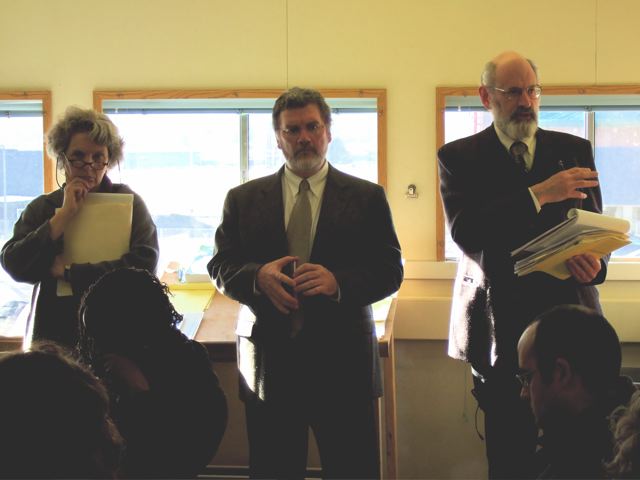
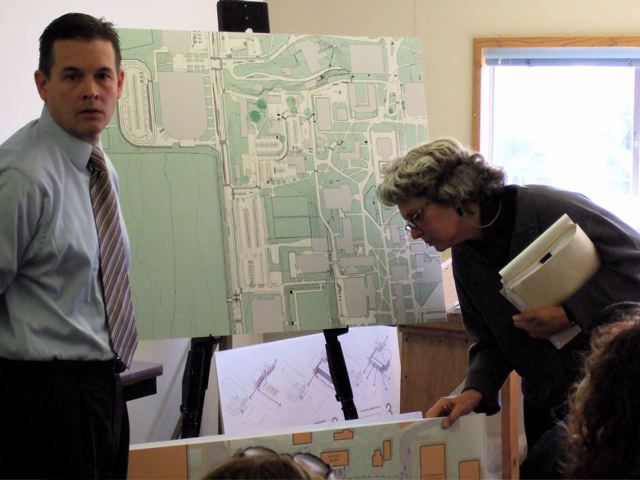




No comments:
Post a Comment